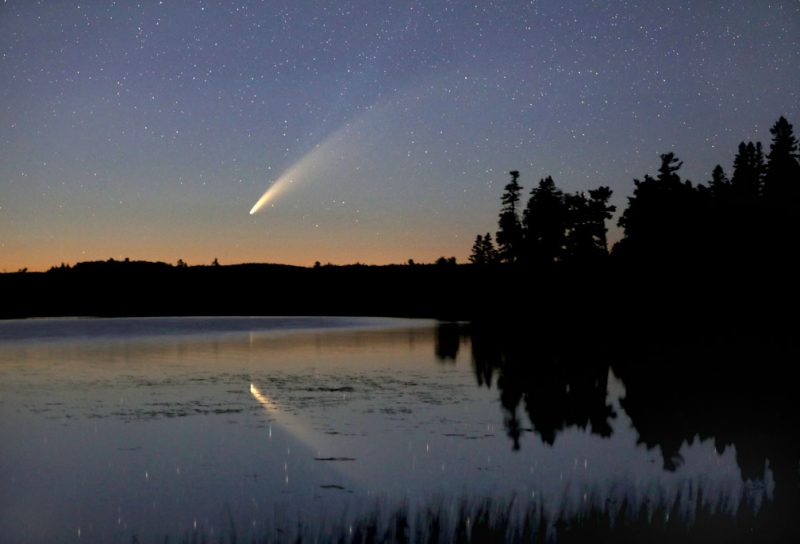Neowise
It’s time to look to the sky as we’re blessed with NEOWISE
It’s the first time since the ’90s we can see a comet with the human eye, and the first time humans can see NEOWISE (~6700 years since its last earth pass). Not only can you see it with the human eye twice a day for the next couple weeks, you can capture it on camera.
The first thing to do is look at the light pollution map and find the place with the least light pollution near you. You should also check out how clear the skies will be and note that this website shows you two extra useful things: The bortle number (1 is the best, 9 is the worst view of the skies) as well as when the ISS passes over.
I’m going to digress about the ISS for a moment, as if you’ve never seen it, and you’ve read this far, give it a try as well! The ISS passover row will show you the passes in your area today, and when you hover it, it will tell you where the ISS starts in terms of your current sky, and the direction it will head (“the end”) so you know exactly where to look, to the second. The most relevant fact perhaps for your likeliness in spotting it is the magnitude, which is a logarithmic scale of the brightness of an object in the sky. In simple terms, the lower the number, the more likely you can see it with the naked (no telescope or binoculars) human eye. As of writing this, there is a -1.8 pass and then a -3.4 pass tonight, the second pass is lower, so will be notably easier to see.
 Photo Copyright: AstroBob
Photo Copyright: AstroBob
Now back to NEOWISE – it seems to be visible just after the sun goes down right now (around 10:30pm in Vancouver tonight) and early morning, between 3am and sunrise.
Your best bet to get started is install a star map app such as Stellarium Mobile Free (or Plus) - Star Map and search for C/2020 F3 Neowise ; otherwise look for the bright Capella star and then look straight down from there, or maybe even easier is look just below the big dipper and look below it.
If you’re a photographer as well, Jack Fusco has a great article with tips on how to photograph it.
The comet will be visible just after dusk in the middle of July according to Earthsky.org and perigee, or closest point to the earth, will be on July 22, 2020 so don’t miss the opportunity to see it!
UPDATE July 23: The Sky Live has a lot of useful info
Happy comet hunting!

Leave a comment